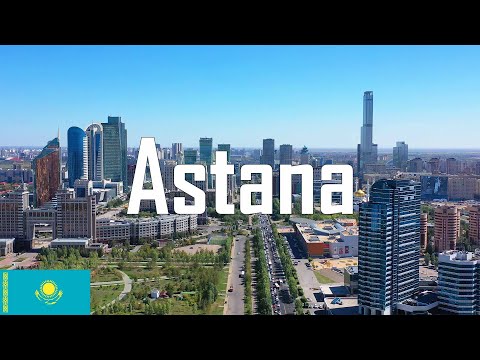
Astana, the capital of Kazakhstan since 1997, is a testament to the country’s ambitious vision and rapid modernization. Situated on the windswept northern steppes of the country, Astana (renamed Nur-Sultan in 2019) represents a striking contrast – a futuristic cityscape set against a backdrop of stark natural beauty. This city has transformed into a vibrant hub for international business, culture, and politics.
#### Architectural Marvels and Urban Planning
Astana’s transformation into a super modern city is most apparent in its avant-garde architecture crafted by world-renowned architects. The master plan was designed by Japanese architect Kisho Kurokawa, who envisioned the city as an organized collection of diverse districts with ample green spaces and boulevards radiating from a central axis. This plan laid the groundwork for what would become one of the world’s unique urban landscapes.
One cannot discuss Astana without mentioning the iconic Bayterek Tower, designed to resemble a poplar tree holding a golden egg. This monument has become not only a symbol of Astana but also represents Kazakhstan’s aspirations and economic growth. Another significant highlight is the Khan Shatyr Entertainment Center – a massive tent-shaped structure made from an ethylene-tetrafluoroethylene (ETFE) canopy – designed by British architect Norman Foster.
The Palace of Peace and Reconciliation, also designed by Foster, stands as another architectural marvel. It is shaped like a pyramid and serves as an interfaith harmony center that encapsulates Kazakhstan’s commitment to global peace and cultural dialogue.
#### Economic Dynamics
As one of the youngest capitals in the world, Astana has experienced rapid economic growth and development. It’s not only a political nexus but also an emerging financial centre in Central Asia. The establishment of the Astana International Financial Centre (AIFC) aims to attract investment and become an economic powerhouse similar to Dubai or Singapore within Eurasia.
The city’s economy is bolstered by substantial investments in infrastructural projects like new airports, highways, and railways that aim to enhance connectivity both domestically and internationally. These developments have turned Astana into an attractive destination for international businesses looking at opportunities in Central Asia.
#### Cultural Vibrancy
Despite its futuristic look, Astana has not neglected Kazakhstan’s rich cultural heritage. Various festivals such as the Astana Opera Ball and numerous museums including The National Museum of Kazakhstan offer insights into the nation’s history while promoting its cultural diversity.
The city hosts various international events which reflect its role on the world stage; these include sports events like stages of international cycling races or prestigious conferences focused on sustainable development or international diplomacy.
#### Challenges Ahead
However, transitioning into a super-modern city comes with its challenges; managing urban growth with environmental sustainability being paramount among them. The harsh climatic conditions – severe winters could be challenging for maintaining energy-efficient buildings while ensuring comfortable living conditions for its residents.
Balancing rapid urbanization with traditional Kazakh lifestyles poses another challenge; ensuring that while moving towards modernity there remains respect for traditional customs and practices which form an integral part of Kazakhstan’s identity.
#### Conclusion
Astana exemplifies how vision coupled with determined execution can transform cities within decades — from humble beginnings to audacious futurism. As it continues to evolve under its relatively new name Nur-Sultan after former president Nursultan Nazarbayev this dynamic capital remains at heart Central Asia’s beacon towards modernity but retains its spirit deeply rooted in Kazakh culture.
